I went on a tour in Manta that was a sort of overview of the area. Our first stop was a cultural museum, which had displays of cultural artifacts and some information about the various indigenous peoples, beginning with the Vegas from about 7500 BC. Unfortunately, no photography was allowed, not even without flash, and the museum had no gift shop where pictures could be bought, so I will have to try to remember what I saw. I was not a happy camper, particularly since there were some pieces that were unique in my experience: many instances of water jugs that had other clay sculptures appended to them, including human figures and buildings. When I asked the guide why these were made that way, he said "for ritual," so I am not sure he understood the question. (I was already a bit suspicious of his knowledge/understanding because there was a large map showing where all the indigenous peoples lived, but the Vegas – the most important ones according to the guide – were not shown anywhere. When I asked where they were, I was told they were a culture, not a place. I think the real answer was that he didn't know.)
We then went to a Panama hat making demonstration; the guide called it a factory, but what we saw was clearly only a demonstration of the steps in making a Panama hat
. We learned that it takes 80 hours to make the average (not the finest) Panama hat, which was entirely believable, since it is apparently done entirely by hand. The Panama hat is called that because they were worn by the workers building the Panama Canal; the hat was invented and still is made in Ecuador, not Panama. The best Panama hats can cost $800 and are so finely woven that they can be rolled up and stored in a box about eight inches long by two inches high by two inches wide.
We next visited a local market, where I bought a couple of figurines carved out of ivory nut and some alpaca wool gloves. I even did some bargaining, although I still feel it was amateur versus pro, but I did get about 25% off the price.
After the market, we went to a factory where ivory nuts are made into buttons. The factory was fairly primitive: they had power tools to cut the nuts and punch out the buttons, but all sorting and finishing was done by hand
. The buttons are surprisingly like ivory; just like the figures I bought.
Our last stop was a factory that makes burlap bags. They showed the steps in producing the bags, from the leaves being split and carded and spun into thread, to the weaving and sewing of the finished product. One of our group remarked that it was very much like Colonial Williamsburg – about the same level of technology.
On the way home to the ship, we passed an area where fishing boats were being built, and a fish market on the beach. We also passed a huge monument to the tuna (atun in Spanish); Manta is a fishing port and tuna is their main catch. Both Chicken of the Sea and Bumble Bee have big processing plants in Manta. The monument shows a tuna leaping over a tuna can (see picture). The picture I got is not the best because I had to take it out the bus window as we drove by.
Manta, Ecuador
Wednesday, January 12, 2011
 Manta, Ecuador
Manta, Ecuador
Other Entries
-
1Arrived in Fort Lauderdale
Jan 048 days prior Fort Lauderdale, United Statesphoto_camera8videocam 0comment 4
Fort Lauderdale, United Statesphoto_camera8videocam 0comment 4 -
2Embarkation Day
Jan 057 days prior Fort Lauderdale, United Statesphoto_camera7videocam 0comment 1
Fort Lauderdale, United Statesphoto_camera7videocam 0comment 1 -
3Day 2 – At Sea
Jan 066 days prior Cayman Is, Cubaphoto_camera3videocam 0comment 1
Cayman Is, Cubaphoto_camera3videocam 0comment 1 -
4Day 3 - George Town, Cayman Islands
Jan 075 days prior Grand Cayman, Cayman Islandsphoto_camera6videocam 0comment 2
Grand Cayman, Cayman Islandsphoto_camera6videocam 0comment 2 -
5Puerto Limon, Costa Rica
Jan 102 days prior Puerto Limon, Costa Ricaphoto_camera9videocam 0comment 0
Puerto Limon, Costa Ricaphoto_camera9videocam 0comment 0 -
6Transiting the Panama Canal
Jan 102 days prior Panama City, Panamaphoto_camera5videocam 0comment 1
Panama City, Panamaphoto_camera5videocam 0comment 1 -
7Manta, Ecuador
Jan 12 Manta, Ecuadorphoto_camera5videocam 0comment 1
Manta, Ecuadorphoto_camera5videocam 0comment 1 -
8Callao (Lima), Peru
Jan 142 days later Lima, Peruphoto_camera9videocam 0comment 2
Lima, Peruphoto_camera9videocam 0comment 2 -
9Callao, Peru -- Wildlife Tour
Jan 153 days later Lima, Peruphoto_camera7videocam 0comment 0
Lima, Peruphoto_camera7videocam 0comment 0 -
10Rapa Nui (Easter Island)
Jan 208 days later Easter Island, Chilephoto_camera9videocam 0comment 2
Easter Island, Chilephoto_camera9videocam 0comment 2 -
11Bounty Day on Pitcairn Island
Jan 2311 days later Pitcairn Islands, United Statesphoto_camera8videocam 0comment 3
Pitcairn Islands, United Statesphoto_camera8videocam 0comment 3 -
12Fun animals
Jan 2412 days later Pitcairn Islands, United Statesphoto_camera10videocam 0comment 1
Pitcairn Islands, United Statesphoto_camera10videocam 0comment 1 -
13Overrun by pirates!
Jan 2513 days later French Polynesia, French Polynesiaphoto_camera2videocam 0comment 2
French Polynesia, French Polynesiaphoto_camera2videocam 0comment 2 -
14Happy Birthday in Tahiti
Jan 2614 days later Papeete, French Polynesiaphoto_camera11videocam 0comment 4
Papeete, French Polynesiaphoto_camera11videocam 0comment 4 -
15Bora Bora: Day 1 in Paradise
Jan 2715 days later Bora Bora, French Polynesiaphoto_camera21videocam 0comment 1
Bora Bora, French Polynesiaphoto_camera21videocam 0comment 1 -
16Bora Bora: Day 2 in Paradise
Jan 2816 days later Bora Bora, French Polynesiaphoto_camera10videocam 0comment 1
Bora Bora, French Polynesiaphoto_camera10videocam 0comment 1 -
17Wild seas in the Cook Islands
Jan 3018 days later Avarua, Rarotonga, Cook Islandsphoto_camera15videocam 0comment 0
Avarua, Rarotonga, Cook Islandsphoto_camera15videocam 0comment 0 -
18The independent nation of Niue
Feb 0120 days later Alofi, Niuephoto_camera8videocam 0comment 0
Alofi, Niuephoto_camera8videocam 0comment 0 -
19Tonga, the Sacred Garden
Feb 0322 days later Nuku'alofa, Tongaphoto_camera17videocam 0comment 4
Nuku'alofa, Tongaphoto_camera17videocam 0comment 4 -
20Auckland, the City of Sails, Day 1
Feb 0625 days later Auckland, New Zealandphoto_camera19videocam 0comment 1
Auckland, New Zealandphoto_camera19videocam 0comment 1 -
21Auckland, the City of Sails, Day 2
Feb 0726 days later Auckland, New Zealandphoto_camera9videocam 0comment 1
Auckland, New Zealandphoto_camera9videocam 0comment 1 -
22Tauranga, on the Bay of Plenty
Feb 0827 days later Tauranga, New Zealandphoto_camera12videocam 0comment 2
Tauranga, New Zealandphoto_camera12videocam 0comment 2 -
23Wine and Art Deco at Napier on Hawke's Bay
Feb 0928 days later Napier, New Zealandphoto_camera15videocam 0comment 0
Napier, New Zealandphoto_camera15videocam 0comment 0 -
24Wellington -- Following Frodo's Footsteps
Feb 1029 days later Wellington, New Zealandphoto_camera19videocam 0comment 1
Wellington, New Zealandphoto_camera19videocam 0comment 1 -
25Christchurch -- A bit of England in New Zealand
Feb 1130 days later Christchurch, New Zealandphoto_camera19videocam 0comment 0
Christchurch, New Zealandphoto_camera19videocam 0comment 0
Comments
2025-05-22
Comment code: Ask author if the code is blank

 Manta, Ecuador
Manta, Ecuador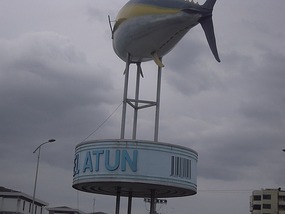
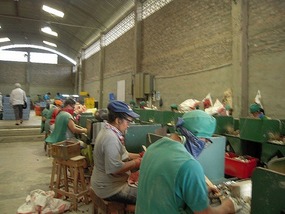













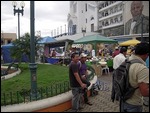
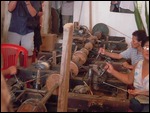
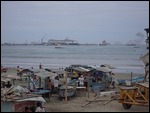
Barb
2011-01-22
So, have you looked it up in the book, yet?